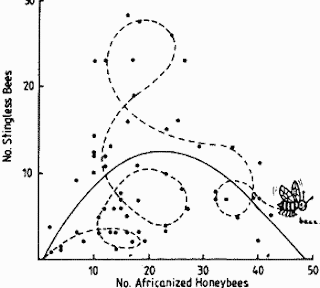1. Good use of white space: this advertisement show how their product cancels noise by using the lawnmower metaphor to cut the noise "grass", leaving behind only white space, a common metaphor for silence.
2. Poor use of white space: this advertisement, on the other hand, leaves the whole thing feeling unbalanced because all the white space is used up except the bottom left corner, which is simply languishing and unused.
3. Portrait orientation: this advertisement is oriented like a portrait or a letter rather than sideways like a panoramic shot.
4. Landscape orientation: this advertisement is sideways or double wide to portray twice as much information as one portrait advertisement. An advertisement splashing across two pages would work this way.
5. Single column grid: the information is in one column that fills up the entire page. This is the standard column arrangement of most novels and textbooks.
6. Triple column grid: rather than one single wide column, the text is broken up into three columns to break up the information, making it easier to read and to indicate where the eye can take a rest. As the picture indicates, the columns should ideally all be the same height.
7. Mixed column grid: in this case, one page has two columns while the other has three. This is done to accommodate graphics and columns, although it does make the spread feel somewhat unbalanced.
8. Heading flush with text: the title isn't spaced from the body text with any additional leading or hard returns. The only difference is indicated by center alignment as opposed to left alignment.
9. Marginal heading: this excerpt is from a book manuscript I'm currently editing. The marginal heading is much larger, bolded, and separate from the text and subheadings by at least one hard return.
Choosing a Computer
Whether you work in the office or at home on a personal computer, you must provide your own protection. The essential ergonomic question—how does it feel to work with this machine and its peripherals all day?—has become the single most important consideration when purchasing a computer. Think first about the way the computer itself feels, then deal with the peripherals.
How Easy Is It to Use?
Computer ads, like automobile ads, emphasize speed, power and performance while
10. Numbered list: numerical lists indicate hierarchy or the order events occurred in or the order events will occur in. Any way they're used, numbered lists provide instant hierarchy.
11. Bulleted list: unlike numbered lists, bulleted lists don't provide hierarchy by assigning a numerical value to any one item in particular (ex. "picking up laundry" is #1 in importance). Rather, each is given equal weight simply by being on the list; to eschew any one item would be detrimental rather than one item being given second or third preference.
12. Drop cap: the initial letter of the page or paragraph that drops down multiple lines is given great importance as the starting point. It immediately draws the eye and tells the reader where to begin while being rather aesthetically pleasing (at least in this case).
13. Good ordering of information: the hierarchy of the information is made clear by the shape of the pyramid while showing how each piece is related to the others; even though each food group is in a clearly delineated section, each is connected to the others to create a balanced diet (according to the pyramid's creators).
14. Poor ordering of information: this Coca Cola advertisement is rather ambiguous. How is the rooster related to the soda? Why would a rooster be telling you to drink it? Roosters can't drink soda! Last time I checked, one of Coke's mascots wasn't even a rooster. While the intention is clear, the delivery of the message is poorly organized.
15. Citation style (MLA): this sample paper demonstrates how MLA dictates the top matter (author's name, professor, etc.), the spacing for the title, how citations out to written out, etc. Each style will have different guidelines.
16. Title and section head: to differentiate different pieces of an argument, section headings are offset by space and usually indicated by bolding or underlining.
17. Tabs: to create separation between paragraphs, spaces or tabs are inserted to indicate that a new paragraph has begun. This way, no ideas are running into one another.
18. Headers or footers: headers and footers are used to place the author's name or the title of the book on each page, as well as page numbers or footnotes. This example indicates how much space should be given to a standard header and footer.
19. Watermark: a watermark is placed over an image to prevent just anyone from using an image without paying royalties. No one wants to see a model's face with a giant watermark thrown over it! When placed behind text, a watermark can also act as a background image to create interest and contrast for the reader.
20. Frame using solid or dotted lines: text box framing draws the eye to the information in that box. Framing can such apart such information as pull quotes or diagrams.























































